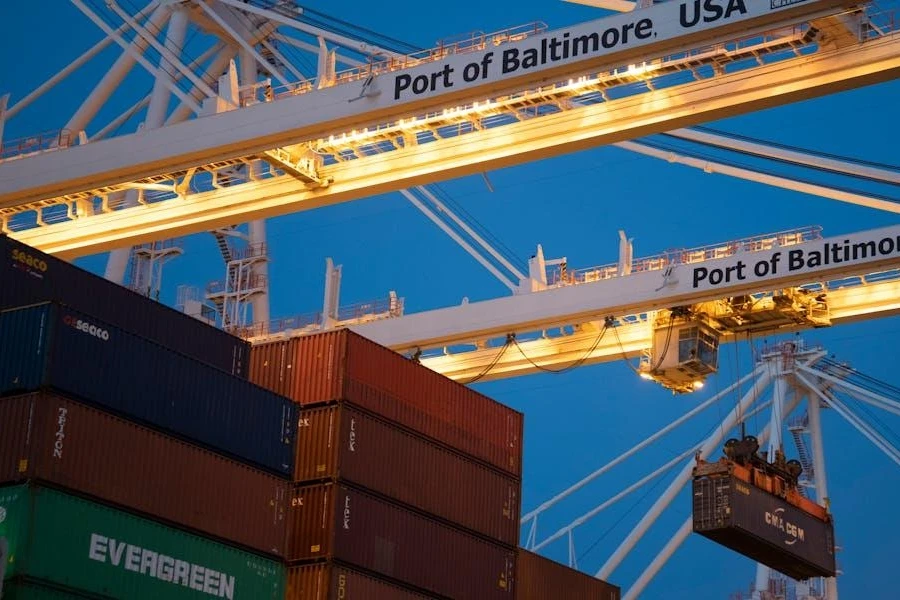There’s a good chance that the average retailer who ships a lot of merchandise from suppliers abroad has come across the acronym FOB in their shipping documents. But for those who don’t know the meaning of FOB, this blog has you covered.
Not knowing the purpose of FOB as a retailer shouldn’t be a big deal. Afterall, some experts in the shipping industry don’t even know its true meaning. But not to worry, this blog will break down everything businesses should know about FOB so that you can find the optimal shipping solution for your products in 2024.
Table of Contents
What does FOB mean in shipping?
How do sellers use FOB in shipping documents?
How FOB shipping terms affect accounting
5 tips for retailers to follow when using FOB shipping terms
2 common misunderstandings about FOB shipping
Bottom line
What does FOB mean in shipping?
FOB stands for “free on board”—although some call it “freight on board” unofficially. Shipping documents use this term to specify when the responsibility and ownership of goods are transferred from the seller to the buyer.
It indicates who is responsible for damaged or lost goods during shipping. It also specifies who pays for the shipping costs. For example, if international shipping documents come with the term “FOB [name of emerging port],” it means the following:
- The seller accounts and is liable for getting the packages to the port and paying to load them onto the ship.
- After loading the goods on the ship, the risk and responsibility are transferred to the buyer.
- The buyer then pays for the ocean freight, insurance, unloading, and transporting the goods from the port to their final destination.
How do sellers use FOB in shipping documents?

As mentioned earlier, shipping documents and contracts will have “FOB” followed by a location, which could be the originating or destination port. To understand how sellers use FOB in documents, retailers must understand what these locations mean in a shipping document or contract. Here’s a closer look.
FOB originating port or shipping point
When sellers label goods as FOB [shipping point], their role in the transaction will end when the shipment begins—i.e., after they give the item to the shipping carrier. At this point, the buyer will hold all titles to the products they purchased. Also, the buyer will pay any cost incurred from when the shipping carrier leaves to when they get their goods unless the shipping agreement has additional terms.
Misunderstanding the FOB [shipping point] agreement can be costly for buyers. For example, consider a small business owner who fails to understand the “FOB [shipping point]” term before signing the papers to import antique furniture from suppliers abroad.
If that shipment arrives damaged, the business will suffer a hefty loss because it cannot sell the expensive goods. Although the buyer in this example will be lucky if they have cargo insurance, they won’t have grounds to request a refund from the seller due to the FOB [shipping point] agreement.
FOB destination port
Documents with the FOB [destination port] agreement are the opposite of shipping ports. When goods have the destination port label, the seller will remain responsible for damages, lost items, and other freight costs until the buyer receives their purchase.
Buyers can usually spot this term if the shipping document or contract includes the word “Destination” or the destination port in brackets. For instance, if the shipment is going to California, the document will show “FOB [California].”
FOB [Destination port] is excellent for buyers because the seller is responsible for the goods until they reach the destination. This agreement means that the buyer may only accept the purchase when it arrives in perfect condition, which is also a good way for sellers to increase customer service.
How FOB shipping terms affect accounting

Shipping costs often depend on the FOB status, as whoever is responsible for transit will pay for transit. But that’s not all FOB does for purchases. It also determines how and when businesses will account for goods in their inventories.
If sellers send the shipment to FOB [shipping point], they consider the sale “complete” after delivering the items to the carrier. Hence, the seller records the sale, while the buyer records the shipment as inventory, even before receiving it physically.
On the other hand, for items sent via FOB [destination port], the seller will only record the shipment as a successful sale once it reaches the buyer in good condition. Similarly, the buyer will only add the products to their inventory once they receive, inspect, and accept the shipment.
5 tips for retailers to follow when using FOB shipping terms
Even when buyers know about the FOB [shipping point] terms and agree to it anyway, they should know what they are signing up for. Here are five tips to help retailers consider the FOB shipping terms so they have a solid idea of the risks.
1. Understand the liabilities

Before retailers negotiate with sellers offering a FOB [shipping point] contract or agreement, they must understand the risks of using such international shipping arrangements. They should consider the costs, risks, and responsibilities associated with FOB [shipping point] and only proceed with the deal if they can handle them.
2. Consider the risk tolerance
What options would retailers have for purchasing cargo insurance and managing their goods during transit? This is another question retailers must ask before agreeing to a FOB [shipping point]. Imagine the items to be shipped are unique, expensive, or in categories where obtaining insurance is challenging. The risk will be too high for such scenarios, so retailers should negotiate for FOB [destination port] instead for a more favorable agreement.
3. Factor in shipping costs
Retailers agreeing to FOB [shipping point] must consider shipping costs and import taxes when negotiating their order’s price. Or, they can negotiate with the seller to include extra coverage for shipping costs in the contract.
4. Leverage order volume

What if retailers are ordering many items from the same seller? They may have more negotiating power for FOB destination terms. It’s likely because the shipping cost per unit will be low enough for the seller to consider.
5. Use a freight forwarder
Beyond the four tips above, retailers can employ the help of freight forwarders, especially for international ecommerce. Freight forwarders can make logistics management easier, helping buyers reduce the risk and complexity of a FOB [shipping point] agreement.
2 common misunderstandings about FOB shipping
1. FOB destination means the seller pays all costs
The sellers indeed handle most of the cost under FOB destination, but they have ways to reduce the pressure. For starters, sellers may add the shipping costs to the order’s final cost. Additionally, buyers may handle the insurance and freight costs indirectly.
2. FOB shipping point always benefits the seller

Although FOB [shipping point] directs all the risk to the buyer, it doesn’t leave the seller without their fair share. For instance, sellers who only offer FOB [shipping point] may see their reputation and sales conversion rate plummet.
Bottom line
FOB rules are a critical part of any shipping agreement or contract. If business buyers don’t check their shipment’s FOB labels (shipping point or destination), it can leave them in a terrible position. They may be out of funds, uninsured, or responsible for unsellable or damaged items.
However, FOB is only one of many things businesses should worry about. Despite FOB’s international recognition, retailers must also consider each country’s trade laws. Whether they are selling or buying globally, they must review the laws of the country they’re shipping to or from before agreeing to FOB terms.




